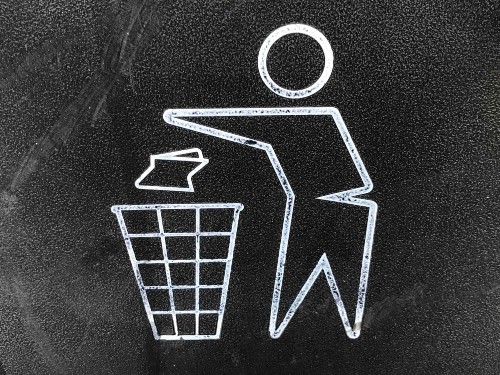Circular Training: Recycling Day on March 18
Circular economy is the latest buzz phrase: Raw materials should no longer be exploited, used and then lost in a one-way system. Major economic players are currently in the process of putting this resolution into practice – but the individual also plays a key role.
“Cradle to Cradle” is a descriptive term for the circular economy coined in the late 1990s by the chemist Michael Braungart and architect William MacConnough and described in their groundbreaking book. With their initiative, the two thinkers help companies in the consumer goods sector to become more sustainable by bringing them closer to recyclable raw materials and ensuring that products find their way back into the material cycle as integrally as possible at the end of their life cycle.
But not everybody is a manufacturer who can make better use of our resources in this way, which is why – for us people on the street, so to speak – there is Global Recycling Day. The Global Recycling Foundation launched this day in 2018 to draw attention to how important the raw material cycle is for the future of our planet. It highlights how recycling not only conserves resources and keeps them in the material cycle, but also reduces CO2 emissions and saves energy. With the help of life cycle assessments, the concrete benefits of recycling systems become crystal clear:
Recycling in Switzerland, for example, achieves an environmental benefit that compensates for the annual residential energy needs of 790`000 people – that's all the inhabitants of Zurich, Basel, Bern and Lucerne combined.
Or to play another tune: In the past 31 years, the SENS eRecycling organisation has collected a lot of copper – enough, in fact, to be able to craft 44 million trumpets.

As it is, most of us regular consumers probably can’t even play a trumpet, but what we can do is make use of Switzerland’s excellent recycling infrastructure. Glass jars, tomato paste tins, the commuter newspaper and the cardboard box from Zalando – separating these items from our household waste and putting them out for separate collection or taking them to specially designated collection points has long been second nature to us. Now we need to keep our eyes peeled for new initiatives: Wholesalers, for example, have already been saving our plastic from incineration for some time by taking it back and putting it to new use. Take batteries, too – the raw materials inside them have been valuable enough to make dismantling and reusing them an enduring business. Even gold is being recovered from old phones in true “urban mining” style. Assarée, a sustainable gold mining company, recently commissioned hip designers to take the precious metal extracted in this way and turn it into cool jewellery.
Our result:
Yes, recycling may be a bit of a hassle at times, but it’s also a contribution, along with conscious shopping and climate-friendly eating, that we can integrate into our daily lives. Every day, not just on March 18.

